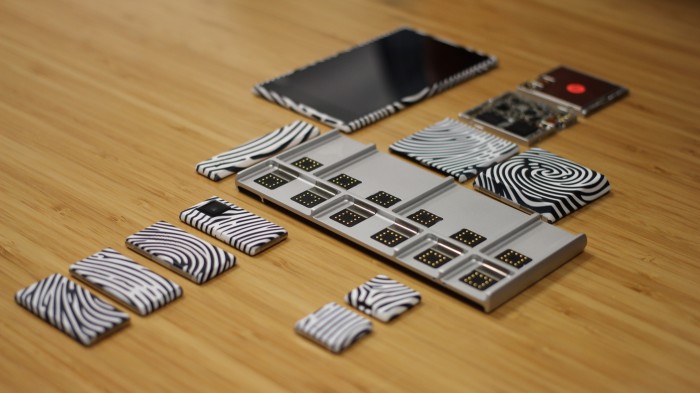A Eulogy for Google’s Project Ara, a Phone That Should Have Been
The world of smartphones is dominated by devices that, for the most part, all look the same and work in roughly the same way. And it will stay that way for now, as Google’s experiment in building a modular phone, called Project Ara, has been pronounced dead.
Ara was a vision of something different, an attempt to make phones that would allow users to customize them by swapping out bits of hardware. The phones excited people who wanted an alternative to the planned obsolescence of today’s handsets, and the need to buy a whole new device just to get a better camera or battery life. They were going to be inexpensive, adaptable, and, by contemporary gadget standards, built to last.
As one of the most prominent projects in Google’s Advanced Technology and Projects (ATAP) group, it looked for a while like Ara might succeed. Tantalizing prototypes were unveiled, launch dates scheduled. We thrilled at the images of the Lego-like structure, colorful parts strewn across a tabletop. They called out to be handled, tinkered with, improved upon.

Then the delays started. What was to be a 2015 launch bled into this year. The head of ATAP, Regina Dugan, who had once called her crew “a small band of pirates trying to do epic shit by closing the gap between what if? and what is,” fled for Facebook, and the promise of a team of “hundreds of people, backed by hundreds of millions of dollars.” As of just a few days ago, rumors still maintained that 2017 would be the year that Ara would find a way. But when the ax finally fell, anyone who wanted to see Ara find a niche in the endless landscape of me-too smartphones had already known in their hearts that it was never going to happen.
As is often the case in the tech world, Google has said Ara is merely “suspended,” and could still find life should another party want to license the work and try to bring it to market.
The subtext is that such a person or company would be foolish to try. The phones were too expensive to produce. They had trouble keeping up with the brutal pace of technological development that smartphone companies maintain. And their ability to outlast the product cycle of an iPhone or Samsung device (the latest of which bursts into flames after less than a month) was, to reverse the popular phrase, a bug, not a feature when it comes to profit margins.
Modular phones had long been a dream, and the dream is not entirely dead. The Motorola Z Play phone, for example, has several modules that can be snapped onto the phone. But they are high-end add-ons, like a Hasselblad camera. And the phone’s core hardware is designed to remain intact. Disrupting the titanic smartphone industry is, it turns out, not as easy as just having a good idea and snapping it into place.
(Read more: Reuters, “For Project Ara, It’s Module—Not App—Ideas Wanted,” “Google’s Skunkworks Loses Its Leader to Facebook—and Has Yet to Produce Any Hits”)
Keep Reading
Most Popular
How scientists traced a mysterious covid case back to six toilets
When wastewater surveillance turns into a hunt for a single infected individual, the ethics get tricky.
The problem with plug-in hybrids? Their drivers.
Plug-in hybrids are often sold as a transition to EVs, but new data from Europe shows we’re still underestimating the emissions they produce.
What’s next for generative video
OpenAI's Sora has raised the bar for AI moviemaking. Here are four things to bear in mind as we wrap our heads around what's coming.
Stay connected
Get the latest updates from
MIT Technology Review
Discover special offers, top stories, upcoming events, and more.